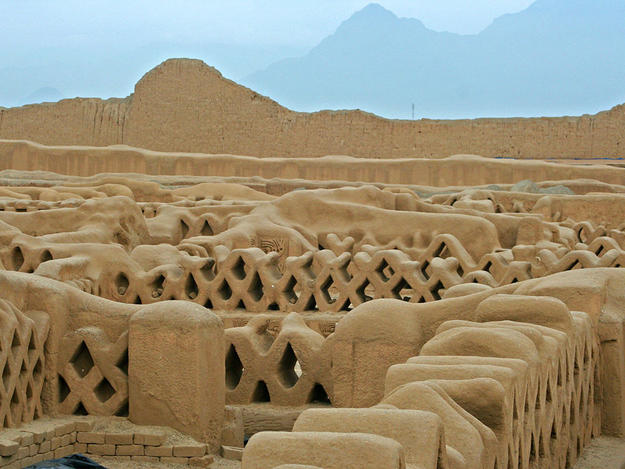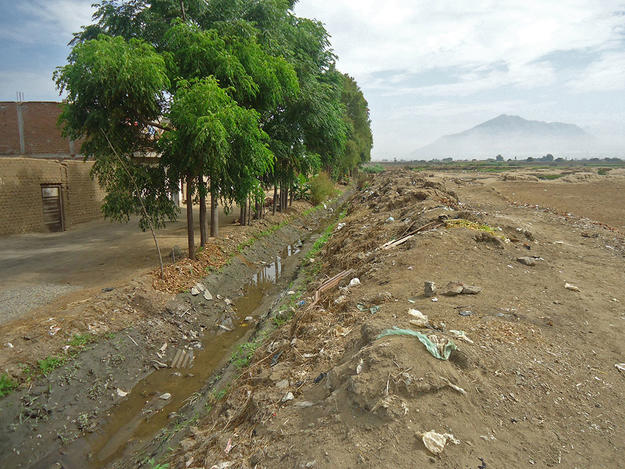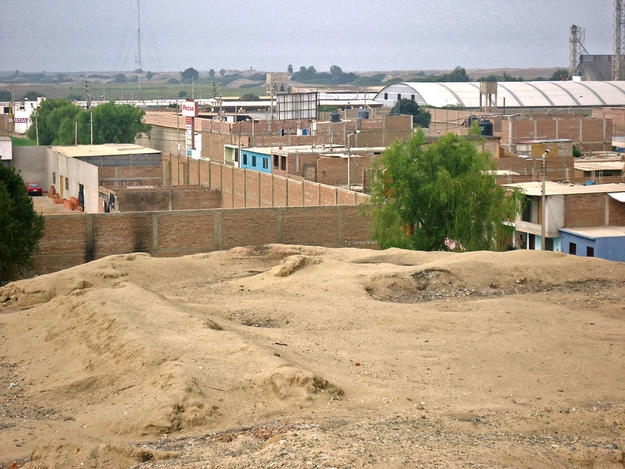Chan Chan
2014 World Monuments Watch
The ancient capital of the Chimú Kingdom, Chan Chan is the largest earthen architecture complex in the Americas. Spanning approximately 12.5 square miles (20 square kilometers) in the desert landscape of the Moche Valley in northern Peru, it is a masterpiece of ancient urban design. It reflects a clear hierarchical construction based on a social and political ideal through rigorous zoning and differentiated use of living spaces. The city thrived for over six centuries but was abandoned after the Inca conquered the area in the late fifteenth century. The archaeological site has been the focus of research and conservation for several decades and is also a venue for education, recreation, and tourism.
Chan Chan was inscribed on the World Heritage List in 1986 and added to the List of World Heritage in Danger the same year. As a vast archaeological site near one of the most populated cities in Peru, urban encroachment and illegal farming have persistently threatened the fragile earthen remains. Resources have historically been invested in the study and conservation of Chan Chan, but by the time the site was included on the 2014 World Monuments Watch, its buffer zone and the surrounding huacas, or temples, had received little recognition. Support from the Watch was intended to encourage integrative planning and design around the site perimeter, enabling both increased protection of Chan Chan and enhanced public use of the area.
Watch Day
Hundreds of students from local and regional schools in Trujillo gathered at the Archaeology Museum of the National University of Trujillo to participate in an art competition for Chan Chan’s Watch Day in June 2015. The aim of the event was to educate the younger generations about the need to protect and manage the archaeological site’s buffer zone against littering and encroachment.
Since the Watch
In June 2015, a proposal to transform the site’s buffer zone into a series of public parks was included in a new Management Plan for Chan Chan. Meanwhile, several conservation initiatives were carried out at Chan Chan and extra funding was allocated to the site for protection during the El Niño rains of 2015-2016.



